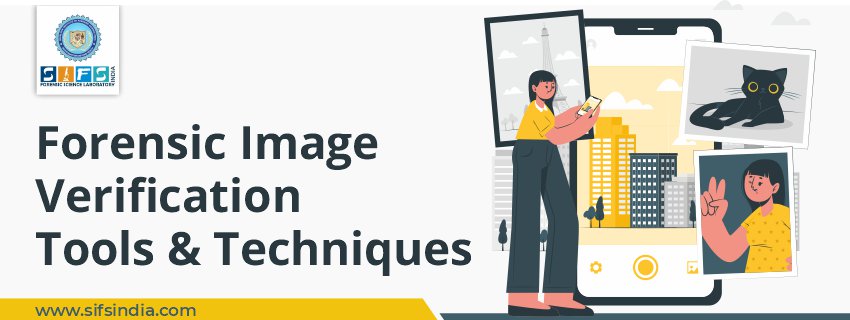Image processing is a branch of computer science that deals with the analysis and manipulation of digital images, especially in order to improve their quality.
The specific document is converted to an image format in order to accomplish a general objective in image processing, which is to obtain an improved image.
The term "Enhanced Image" refers to the extraction of useful information that is used to detect forged documents. Documents converted to image format may not always be original.
Forensic document authentication is required in all organizations, individuals, and activities whose primary goal is to encourage and preserve correct records for the benefit of the people and the region.
Photograph Manipulation
Since the advent of photography, the status of photographs has been debated. Manipulation of photographs has been around since the nineteenth century.
It happened shortly after photography was invented. Previously, that was accomplished by the use of paint, an airbrush, bleaching, or scraping.
The change may also be used for manipulation.
Prior to the introduction of new media, it was performed in a dark space during the development process.
We now live in a world where billions of photos are shared each day. With new media now playing an important part, the debate remains the same.
In reality, the difficulty has increased.
SIFS India Pvt. Ltd.has a team of experts who investigate photographs and images.
We evaluate the photograph, interpret it, and confirm its validity. Photograph authentication has been critical in property cases, ID card fraud, insurance fraud, kidnapping, and other places where optical or physical photographs are used.
Photograph Manipulation in The Digital Era
We are on the verge of a marginal transformation in digital imaging technology in the current digital era.
The advancement of high computational and artificial intelligence techniques has resulted in wonderful image editing techniques that produce imposing results in short time frames.
This will also have an impact on the original artifacts present in digital images.
This refers to the manipulation or forgery of digital data using image editing software, which erodes our trust in digital images.
There has been significant research contribution in terms of various image forgery detection techniques that rely on the semantics of digital images. These techniques aid in re-evaluating the authenticity of digital images.
Photomontage Forgery
The photomontage forgery is shown, in which separate images are joined to form a new image by the use of pasting, overlapping, and rendering operations.
These operations are carried out with the help of freely available and open image editing softwares such as Photoshop, GIMP, Paintshop, and many others.
Because of their use in many hidden realms, it is critical to determine whether the generated image is real or false under such conditions of image manipulation.
As a result, there is a greater need for or inspiration to develop new image counterfeit detection methods that can recognize and confirm the authenticity of digital images.
During the tempering phase, pixel-level geometric irregularities are detected using pixel-based techniques. Inconsistencies at the pixel level are observed.
The techniques included in this are primarily copy-move and splicing-based forgery detection approaches.
Format-based methods make use of the anomalies created during image compression. In this category, double JPEG is the most commonly used method.
This technique alters the truth due to sensor noise, camera lens properties, and on-chip processing in the sensors.
According to various works, knowledge of detection features and methods, modeling techniques, and tools is highly needed to work in this domain.
There is still no technique that can detect all forms of image forgeries, which is a difficult task.
In the future, we need to develop more powerful approaches for estimating forgeries in complex lighting settings, as well as a technique for providing a higher percentage of efficient detection of different forms of image manipulations.
Furthermore, a dataset is needed because most researchers base their work on a limited number of forged images or small datasets for a type of forgery.
Conclusion
In this day and age of cyber crime, computers are more commonly used to commit specific offenses, such as changing the context of records.
We investigated alternations in system-generated documents in both typed and plain backgrounds in this article.
Image recognition software programs such as Adobe Photoshop were used to manipulate the records. After manipulating the papers, they were checked for changes; promising findings were obtained.
The findings showed that a variety of characteristics were consistent with image distortion and could be quickly identified using normal image processing software.
Future enhancements will concentrate on enhancing the framework by providing the verification system with an accurate prediction of document forgery.
Prior to the document being verified, the document to be matched with is submitted to the database. As a result, the database must be kept up to date without any data loss.
References
“Photograph Identification and Verification by Forensic Experts.” DNA Forensics, 15 May 2019, www.dnaforensics.in/tests/forensic-tests/photograph-verification/.
Ramamoorthy, M., N. Ayyanathan, and M. Padma Usha. "Real Time Image Processing and Forensic Verification of Documents." Eurasian Journal of Analytical Chemistry 13.3 (2019): 1074-1082.
Rani, Anuj, and Ajit Jain. "Digital Image Forensics-Image Verification Techniques." Intelligent Computing and Applications. Springer, Singapore, 2021. 221-234.
Ansari, Mohd Dilshad, Satya Prakash Ghrera, and Vipin Tyagi. "Pixel-based image forgery detection: A review." IETE journal of education 55.1 (2014): 40-46.

 January 24, 2021 - BY SIFS India
January 24, 2021 - BY SIFS India